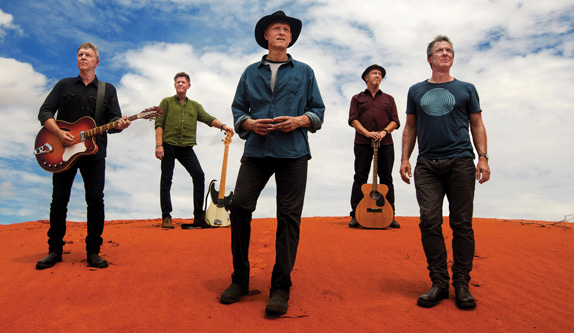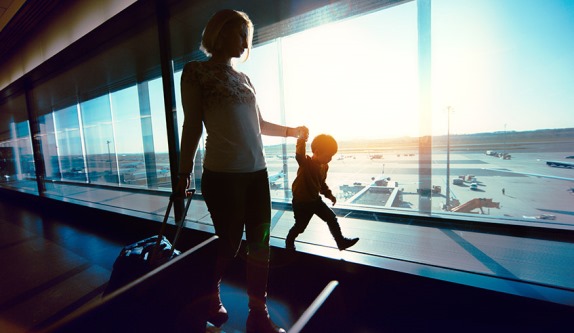Combining exceptional design, the laid-back luxury of a friend’s home and total care for the environment, Cempedak is an example of the future of sustainable tourism as Charley Larcombe discovers.

A faint tropical shower is dripping into the fresh seawater pool in the early morning light over the South China Seas. The jungle percussion of raindrops on palm fronds is only broken by a lonely fisherman skimming across the Riau Archipelago and the slight whir of the bamboo fans overhead. The toughest decision this early in the morning is whether to step out of the billowy muslin shrouding the bed and pad downstairs to make a coffee, admiring the extraordinary bamboo architecture of the private villa as you go. Stretch and come to life; there are white sands to leave footprints on, elusive pangolin to pray to find, and island tales to hear. Welcome to Cempedak.
Sister property to the well-known Nikoi, the island – so named after a local fruit tree – is the new sustainability haven that is quickly gathering column inches in travel magazines throughout the world. 17hectares of virgin rainforest ringed by talc-soft sand studded with Jurassic-esque granite boulders, this adults-only, private paradise has been years in the making. Painstakingly and meticulously planned so as not to disturb the original inhabitants of sea otters, hornbills, eagles and nesting turtles, this is a place to share with nature.
What makes it so ideal – apart from the fact that it looks like Eden – is that it’s a mere three hours door-to-door from central Singapore. Grab a ferry from the Tanah Merah terminal to Bintan where you’ll be picked up by a smiley face who’ll tell you childhood stories about the island en-route to the private jetty. Having driven for roughly an hour through jungle and ramshackle villages with only bare-chested children and scrappy dogs as residents, you’ll enter the gates of Nikoi and Cempedak’s own pier. Say “yes” to a cup of ginger tea and settle into the island-crafted chairs – so beautiful we wanted one as a souvenir – and wait for the private boat, Mana to come chugging into view. Then it’s just a 15-minute race across the blue, past uninhabited islands until your new home appears on the horizon, a perfect half-moon of verdant greens sitting above an azure ocean.
Barefoot luxury is all about paring things back; reaching for a book, not your email; taking the paddle board out to find an even quieter cove on the island, not because you’re desperately searching for something to do; leaving the strains and the stresses behind and reconnecting. And as soon as you step onto the pontoon here, you instantly feel your knotted and tired muscles release.

This is quickly followed by child-like excitement as you take in the beauty of the surroundings. We arrive at lunchtime and are led along the vaulted walkway – a masterclass in bamboo construction – to the restaurant and down reclaimed teak steps to one of four table ‘pods’ overlooking the sea. A light breeze takes off the heat of the day, butterflies flutter (Cempedak doesn’t use toxic methods to eradicate the mosquitos, instead using a natural and still successful one) and a delightfully chatty waitress talks us through the menu. Delicious prawns, spiced chicken, crisp vegetables and coconut rice sets quite the tone for the rest of our stay and I warn you now, you will find it very difficult to say “no” to the encouragement of “just a little more”. Nearly all of the produce used is grown on the island or purchased from local markets and small traders and you can taste that freshness.
There is no room service as the team encourage you to eat together and there isn’t strictly a menu. Instead, as you leave your meal to meander back to some shaded day-bed or for a massage appointment, you’ll be talked through what’s being prepared later. Personally, I can’t even think about my next meal having just eaten, but really it’s the kitchen’s way of being able to whip-up an alternative should they need to.
It’s these little touches – the invitation for sunset cocktails at the Dodo Bar, the jokes with the staff, the conscientious thinking towards the menu – that create a truly personal feeling on the island. It’s almost like you’re staying with friends at their weekend place – I say almost, as how many of us actually have friends with tropical islands as crash pads? But it’s a really lovely ambience to recreate and one you instantly feel as you check-in.
At present, about half of the eventual 20 villas are are complete and you can choose between ones with little paths straight onto the beach or opt for ones higher up in the canopy. We check into the latter, villa number 9, which is so new you can smell the freshly carpentered wood. The great bowed, alang-alang roof curves into the hill-side and manages to both envelop our private rooms, holding back the forest leaves, whilst also immersing us into the surroundings. Bali-based and New Zealand-born architect, Miles Humphreys and the on-island team created these incredible dwellings specifically to add to the environment, not to jar against it.
And they’ve succeeded. Open plan, large lofty spaces, private plunge pools and naturally cooled using the island breezes, the design is practical as well as aesthetically stunning.
Unsurprisingly, it’s difficult to leave your villa, but when you do, set-up for the day on a lounger with the pool behind you and the sea, sand and view at your feet. We take over a day-bed and taste the refreshing home-made cordials – sipping on Cempedak-hollowed bamboo straws – whilst idly deciding on what will encourage us off the cushions into activity. There are paddle boards and kayaks, a catamaran for sunset sails, excursions to local villages and wind-surfing when the breeze is right. A few hours later as the sun climbs in the sky, we finally head off down the beach to snorkel in the shallows. We spot only brilliantly-coloured fish, but there’s more to see on the dive trips the boat crew can organise nearby to coral reefs and ship wrecks. Coming back to shore, I get into conversation with one of the guys who looks after the nesting turtles and he quietly shows me one such nest that he has carefully protected. It’s like a very glamorous Enid Blyton story where you’re washed ashore to simpler times – but
with fabulous cocktails only an ask away.
You’ll rapidly fall into step with Island Time on Cempedak. You’ll drift between private pool, the beach, looking for the gamboling family of resident otters and sampling yet more delights from the kitchen.

One afternoon, I’m taken on a nature walk by Boyan who has worked first on Nikoi and now on the new development for several years. He, like all but Valentina, the guest co-ordinator, is Indonesian and is a true example of the other socially-responsible aspect of Cempedak.
In 2009, the owners set up The Island Foundation, which works with the local community on Bintan and neighbouring islands in establishing a network of learning centres. Education programmes focussed on honing English and IT skills are an aspect of the responsible tourism the company professes, educating not only guests but the local population on sustainability and protecting the environment. It’s clear that all the staff are passionate about where they work, about educating themselves on the island and contributing to the future of the island.
Boyan shows me the “100-use tree” aka the different palms, the Tarzan vines and any number of plants which all have a use on the island. He tells me about the water monitor lizards and its clouded cousin which hang in the trees, and the pythons which keep any rats away. There are ponds of fish fed by the waste management-produced larvae, a kitchen garden blooming with chillies – a personal project by Boyan which means the island is totally self-sufficient in spice – and around every corner there is another story or titbit of information. I take a look at the staff areas built around the trees – one in particular which is said to be home to a female spirit – and marvel at the water systems and the behind-the-scenes eco-ethos which presides here too. Nothing is just for show. Everything and everyone works here to create this oasis. It’s a way of life, rather than a marketing gimmick.
I first met the owner of this perfect drop in the ocean, Australian banker-turned-hotelier, Andrew Dixon for coffee in Singapore pre-trip. In keeping with this issue’s theme of “being green”, I found it fascinating to discuss essentially ‘Cempedak The Business’; to hear how this private island resort is a pioneer in terms of its bamboo architecture, its low-waste materials and its ethos on the impact of the nature, culture and community. Andrew was measured and almost forensic on explaining the many aspects they implement on the island, combining the economics of the businessman and the passion of the idealist.
And it’s not superficial “Eco-tourism” that Andrew is after; he doesn’t believe in guests paying for the privilege, but more about how sustainability is good for the bottom line too. With an engineer-like analysis of solving problems, the Cempedak team have solutions for most things to make them truly self-sufficient. From the bamboo construction – the incredibly versatile material that regrows so easily, ticks the sustainable-box – to dealing with waste management, things are covered.
Back to the present in paradise, and after my inspiring lesson, I’m on my way back to the villa for a massage. The spa itself is yet to be built (although I confess, I had a sneak peek and it is going to be glorious) so the masseuse sets up on our deck. No whale music, no strongly-scented lotions; just the sound of the surf below, natural oils and a massage which leaves me with jelly-like limbs.
As a pre-evening turn around the island, we take delicious gin and tonics down to the croquet lawn and tennis court with their lovingly cared for real-grass, before walking back along the sands to watch the sunset at the Dodo Bar. The second-story tower offers an uninterrupted view of the sun dipping below Bintan, baskets of very moreish belinjau nut crackers and evening aperitifs under the watchful eye of a taxidermy dodo – a nod to another island resident, the Nicobar pigeon, the closest living relative to the extinct bird. It’s the perfect spot to wind down after a long day of…. Well, as the Italians call it: il dolce far niente.
The true traveller adage is to take only photographs and leave only footprints so you can leave paradise intact for future searchers of pristine beaches. With Cempedak, you really feel that they are actively helping in preserving that ideal.


















